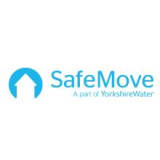This informal article ‘What is a CON29DW residential drainage & water search?’ was provided by SafeMove a trading arm of Yorkshire Water. Formed in 2001, with an aim to provide drainage and water searches for conveyancing purposes, they produce around 90,000 searches per year through a team of expert advisors.
The Law Society’s CON29DW is an essential part of the conveyancing process and provides information regarding water and sewerage services for a residential property. This information is useful for prospective property owners, their legal advisors and mortgage lenders.
What is the history of the CON29DW Drainage & Water Search?
Prior to 2002, drainage & water questions were raised via a Local Authority Search, where only 2 questions were answered.
In 2002, the CON29DW was developed by the Law Society, together with government departments and the Water Industry. The CON29DW at that time included information around the location of sewer and water mains, the connection status of a property, and key billing information.
In 2003, Home Information Packs (“HIPs”) were announced in the Queen’s speech and in June 2006 regulations were set out and full details of the contents of HIPs were released; the CON29DW was listed as one of the mandatory searches to be included in HIPs.
By December 2007, HIPs were made mandatory for all properties being sold, however 3 years later in 2010, HIPs were no longer compulsory when selling a house. The CON29DW, however, remained as a standalone drainage & water search.
Each CON29DW search uses asset and billing information and is designed to highlight potential issues with the public sewer and water network that serve a property, as any issues could lead to maintenance costs or have a detrimental impact on the property value and homeowner’s enjoyment of the property. The CON29DW answers 23 questions in total and provides 2 maps – one for the water network and one for the public sewer network.
What key information is provided in a CON29DW?
- Whether a property is connected to mains water supply.
- Whether foul water and surface water drain to a public sewer.
- How a property is charged for services and who is responsible for billing the property.
- The location of any water meter if there is one.
- Whether there are any Adoption Agreements (Section 104’s) in place relating to a sewer.
- Whether there has been any Build Over consultation to build over any public sewers in the boundary of a property.
- If there is a public pumping station within the boundary of a property or nearby.
- Whether a property experiences low water pressure.
- Whether a property has previously experienced internal flooding due to overloaded public sewers.
- If there is a public Sewerage Treatment Works nearby.
- The water hardness for the property.
Why is a CON29DW residential drainage & water search important?
23 questions are answered in full using operational data used by the relevant water and sewerage company.
- There is a clear audit trail of responsibility back to the data provider.
- Each report is underwritten by the relevant water and sewerage company.
- Final redress available through The Property Ombudsman.
- 97% of CON29DW’s are returned within 1 working day (*correct at the time of writing) Information provided is useful for the homebuyer, lender and legal representative.
We hope this article was helpful. For more information from SafeMove, please visit their CPD Member Directory page. Alternatively, you can go to the CPD Industry Hubs for more articles, courses and events relevant to your Continuing Professional Development requirements.













